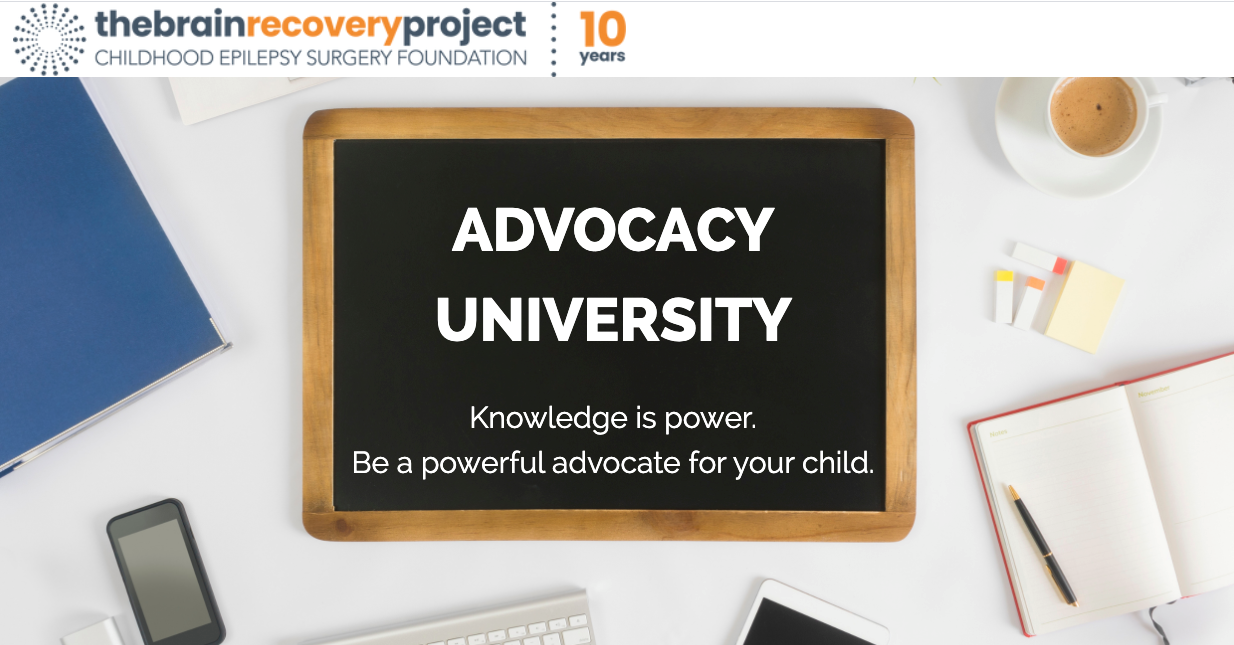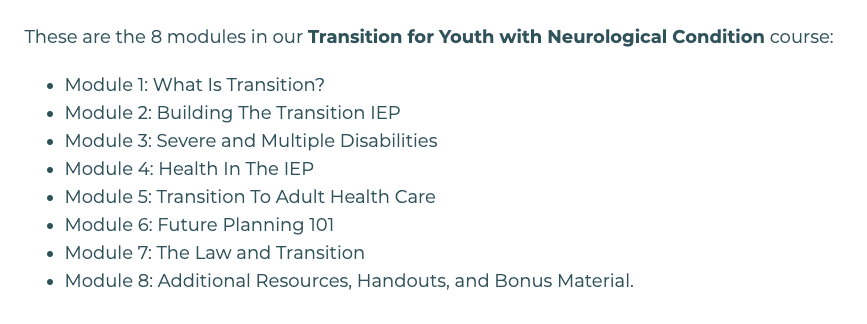
The guide “Education Transition For Youth With Neurological Conditions” is available for free here and the accompanying self-paced training curriculum is available here.
Becoming a full-fledged, legal adult is an exciting time but it can also be overwhelming – particularly for youth living with neurologic conditions who are often described as “falling off a cliff” when they leave the structured setting of high school.
That’s why transition planning is so crucial: to look ahead towards the future, set goals and decide what supports and services are needed for success.
The Brain Recovery Project: Childhood Epilepsy Surgery Foundation has just launched a new step-by-step guide and an accompanying self-paced training curriculum that takes a deep dive into building an education transition plan.
“I wish that I had been more focused on transition when my child started kindergarten,” says Audrey Vernick, COPAA-SEAT.
She is the author of the guide and Director of Patient and Family Advocacy at The Brain Recovery Project.
Her teenage son had a hemispherectomy when he was a young child due to infantile spasms. He’s now on the cusp of adulthood, giving Vernick first-hand experience with the issues covered in the new guide.
“When people ask me about when you should start transition planning, I say ‘right now.’ If you haven’t started, start today,” Vernick says.

Legally, the Individuals with Disabilities Education Act (IDEA) requires a transition plan to be in place by the student’s 16th birthday at the latest. Many states have additional requirements that push that planning a bit earlier to the start of high school.
But best practices suggest that the sooner the transition planning starts, the better. Transition planning covers everything from assessments, developing postsecondary goals, and identifying additional support services, to graduating with the right diploma or certificate.
“Learn what the steps are and then pick and choose each year what you want to prioritize,” Vernick says. “Don’t let it sneak up on you.”
And that’s where the new guide and training curriculum comes in: to help families navigate that process, going over the laws laid out in the Individuals with Disabilities Education Act step-by-step in easily digestible chunks.

Monika Jones, Executive Director of The Brain Recovery Project, has been thinking and talking about her 14-year-old son’s transition plan and Individualized Education Program for years. He’s non-verbal and has significant intellectual impairments.
“If your child is in public school, there are services and supports available to them. And, if they turn 18 and you don’t have the proper legal mechanisms in place, you can run into some big challenges,” Jones says. “It can be overwhelming and sometimes it feels like the information is coming at you like water in a fire hose – but you have to know this information.”
